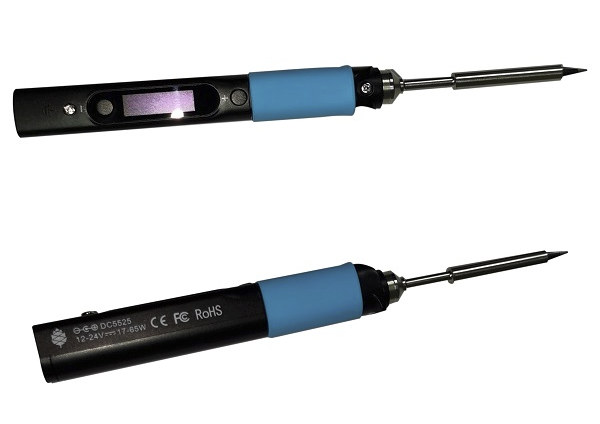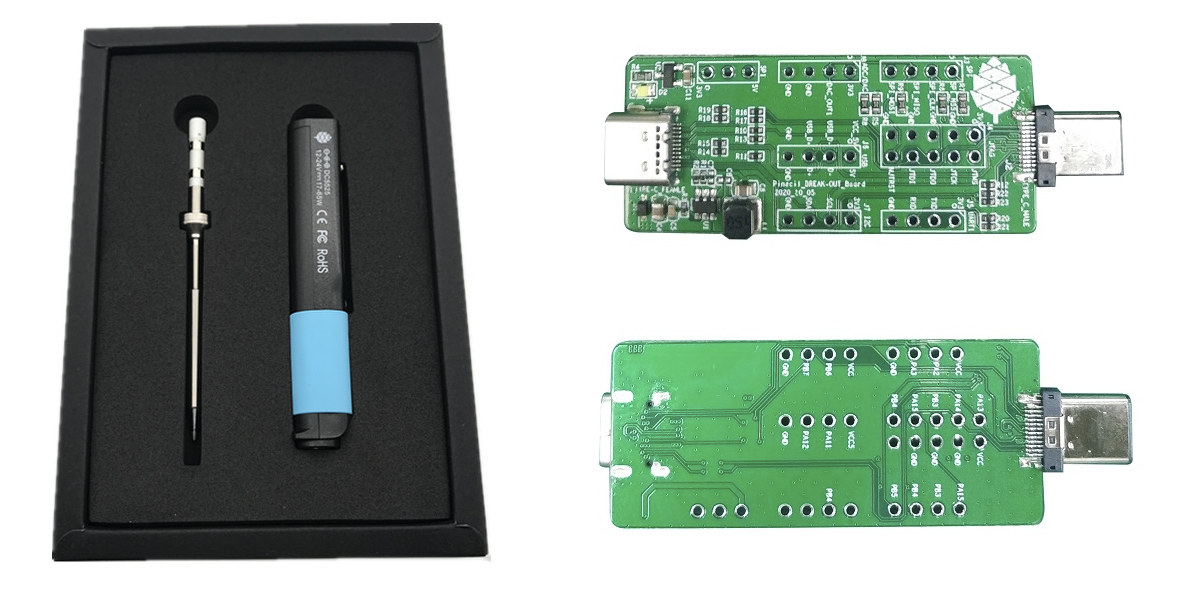We’ve previously mentioned PINECIL RISC-V soldering iron during Pine64’s release of PineCube open-source IP camera development kit, and the good news is the soldering iron is now available for $24.99 on Pine64 store together with optional sets of gross or fine soldering tips compatible with the one used with TS100 model
The soldering iron is powered by GigaDevice GD32VF103TB 32-bit RISC-V general-purpose microcontroller and features a small display and two buttons for user interaction, as well as changeable tips. It can be powered by a USB-C power adapter or a 12 to 24V power brick such as the ones you’d found with laptops.

- MCU – GigaDevice GD32VF103TB 32-bit RV32IMAC RISC-V “Bumblebee Core” @ 108 MHz with 128KB flash, 32KB SRAM
- Display – 0.69-inch OLED monochrome display with 96×16 resolution
- Tip – 106mm long, Type B2
- Temperature range – 100°C to 400°C; reaches operating temperature in 12 seconds.
- Expansion – GPIO & JTAG breakout board connected through USB-C port
- Misc – 2x buttons; auto-standby features
- Power Supply
- 12V-20V / 3A via USB Type-C port with USB PD and QC 3.0 support
- 12V-24V / 3A via 5.5mm/2.5mm power barrel jack
- Dimensions – 170mm with solder tip / 98mm without solder tip x 12.8mm x 16.2mm (SAE 304 stainless steel core housed inside a polycarbonate shell)
- Weight – 30 grams with solder tip; 20 grams without solder tip
- Certifications – FCC, CE RED, ROHS

A gyroscope would have been handy for left/right operation, but maybe it’s selectable with the buttons, and if not, the firmware will be open-source and customizable as it is based on Ralim’s RTOS build that also did an open-source firmware for the popular TS100 soldering iron. More technical details including PINECIL schematics and datasheets can be found on the wiki.

Jean-Luc started CNX Software in 2010 as a part-time endeavor, before quitting his job as a software engineering manager, and starting to write daily news, and reviews full time later in 2011.
Support CNX Software! Donate via cryptocurrencies, become a Patron on Patreon, or purchase goods on Amazon or Aliexpress. We also use affiliate links in articles to earn commissions if you make a purchase after clicking on those links.




